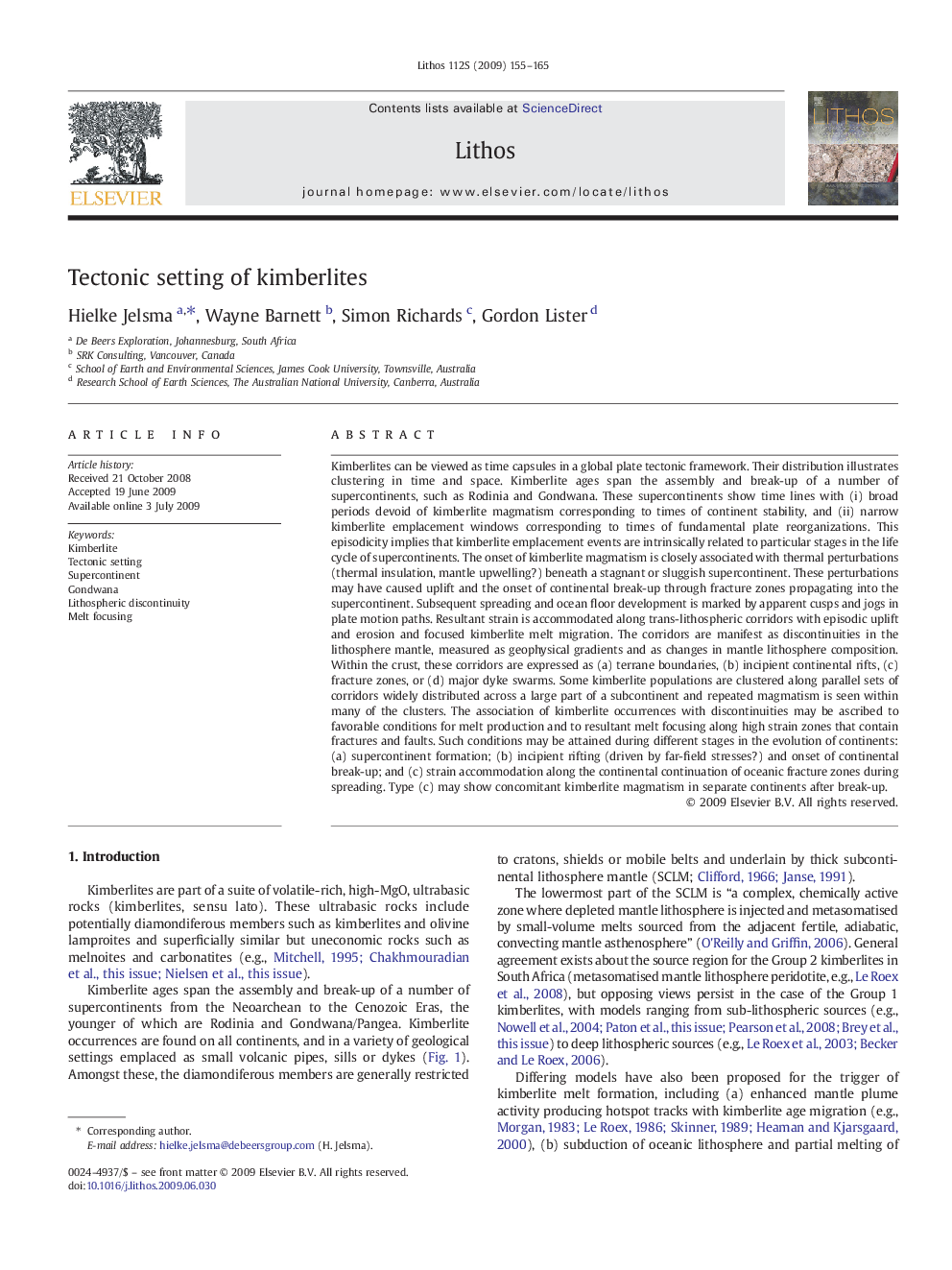| کد مقاله | کد نشریه | سال انتشار | مقاله انگلیسی | نسخه تمام متن |
|---|---|---|---|---|
| 4717256 | 1354429 | 2009 | 11 صفحه PDF | دانلود رایگان |

Kimberlites can be viewed as time capsules in a global plate tectonic framework. Their distribution illustrates clustering in time and space. Kimberlite ages span the assembly and break-up of a number of supercontinents, such as Rodinia and Gondwana. These supercontinents show time lines with (i) broad periods devoid of kimberlite magmatism corresponding to times of continent stability, and (ii) narrow kimberlite emplacement windows corresponding to times of fundamental plate reorganizations. This episodicity implies that kimberlite emplacement events are intrinsically related to particular stages in the life cycle of supercontinents. The onset of kimberlite magmatism is closely associated with thermal perturbations (thermal insulation, mantle upwelling?) beneath a stagnant or sluggish supercontinent. These perturbations may have caused uplift and the onset of continental break-up through fracture zones propagating into the supercontinent. Subsequent spreading and ocean floor development is marked by apparent cusps and jogs in plate motion paths. Resultant strain is accommodated along trans-lithospheric corridors with episodic uplift and erosion and focused kimberlite melt migration. The corridors are manifest as discontinuities in the lithosphere mantle, measured as geophysical gradients and as changes in mantle lithosphere composition. Within the crust, these corridors are expressed as (a) terrane boundaries, (b) incipient continental rifts, (c) fracture zones, or (d) major dyke swarms. Some kimberlite populations are clustered along parallel sets of corridors widely distributed across a large part of a subcontinent and repeated magmatism is seen within many of the clusters. The association of kimberlite occurrences with discontinuities may be ascribed to favorable conditions for melt production and to resultant melt focusing along high strain zones that contain fractures and faults. Such conditions may be attained during different stages in the evolution of continents: (a) supercontinent formation; (b) incipient rifting (driven by far-field stresses?) and onset of continental break-up; and (c) strain accommodation along the continental continuation of oceanic fracture zones during spreading. Type (c) may show concomitant kimberlite magmatism in separate continents after break-up.
Journal: Lithos - Volume 112, Supplement 1, November 2009, Pages 155–165